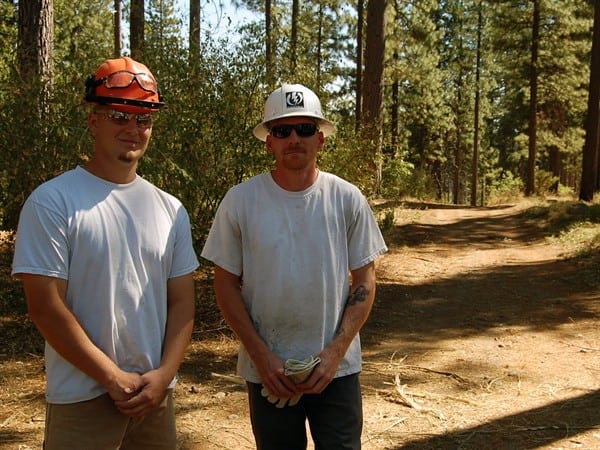
Thanks to Terry Seyden for this story about apparently successful collaboration in California. I excerpted parts that deal with our interest in local jobs and who is doing the work. Here is the link and below are the excerpts. Italics are mine.
After hours of meetings, listening, and grant-writing, now the group is doing just that.
On a recent fall afternoon, Robert Smith drives a faded green masticator that chews up small trees and brush. He’s clearing fire fuel in a part of the Stanislaus National Forest that abuts several subdivisions.
Smith owns and operates Smith Grinding, but when the recession hit, he couldn’t find work. He almost lost his home.
“This area, at one time, had like 23 mills in it, so it was a booming industry,” says Smith. “It slowly has died out all through the ’80s and ’90s. And even what was going on in here came to a screeching halt, what, probably 3 years ago. On a personal level, going out and looking for work, there was none.”
As a part of the consensus group, the forest service is now hiring local contractors like Smith to do much-needed clean-up in the forests. And the consensus group also helped to form a contractors coop, so the group can bid on projects as one unit.
Smith says it’s given him work — and he likes the idea of helping the Amador and Calaveras county communities get those jobs.
“We have a lot of people come in and take this work form us, when we have it right here and should be making money ourselves.”
Bring Back Jobs
Putting people back to work isn’t as simple as just creating jobs. So the consensus group also includes community organizations that teach job readiness; and it works with probation officers to help former prisoners make the transition back to work.
That’s how Anthony Destefano got a job with the crew.
“I’m an electrician by trade, but with the building and the economy dropping, I got laid off, and it was impossible it seemed like to get a job,” Destefano says.
Destefano says he was unemployed for two and half years, and he got himself into trouble with drugs and landed in jail. When he got out on probation, his supervisor referred him to this work crew .
“I’ve just been moving forward, doing positive things. This job has helped me to achieve some goals,” he says.
The section Smith and Destefano just finished clearing looks like the forest floor got a buzz cut underneath the tall oaks, pines and firs they’ve left standing.
The section Smith and Destefano just finished clearing looks like the forest floor got a buzz cut underneath the tall oaks, pines and firs they’ve left standing.
Environmentalist is No Longer the ‘Devil Incarnate’
The crew isn’t just brute labor hacking down trees and brush. Part of the training involves scientists teaching them how to recognize species, what to take out and what to leave, says Katherine Evatt, an environmentalist with the Foothill Conservancy.
“We’re is reducing the risk of catastrophic fire in our communities, which is also a big threat to critical habitat for spotted owls and other wildlife,” says Evatt.
“And it’s going to allow us to start to reintroduce fire as a tool in the Sierra,” she says, adding that because fire has been suppressed for over 100 years, some parts of the forest are too dense to safely use fire as a natural tool.